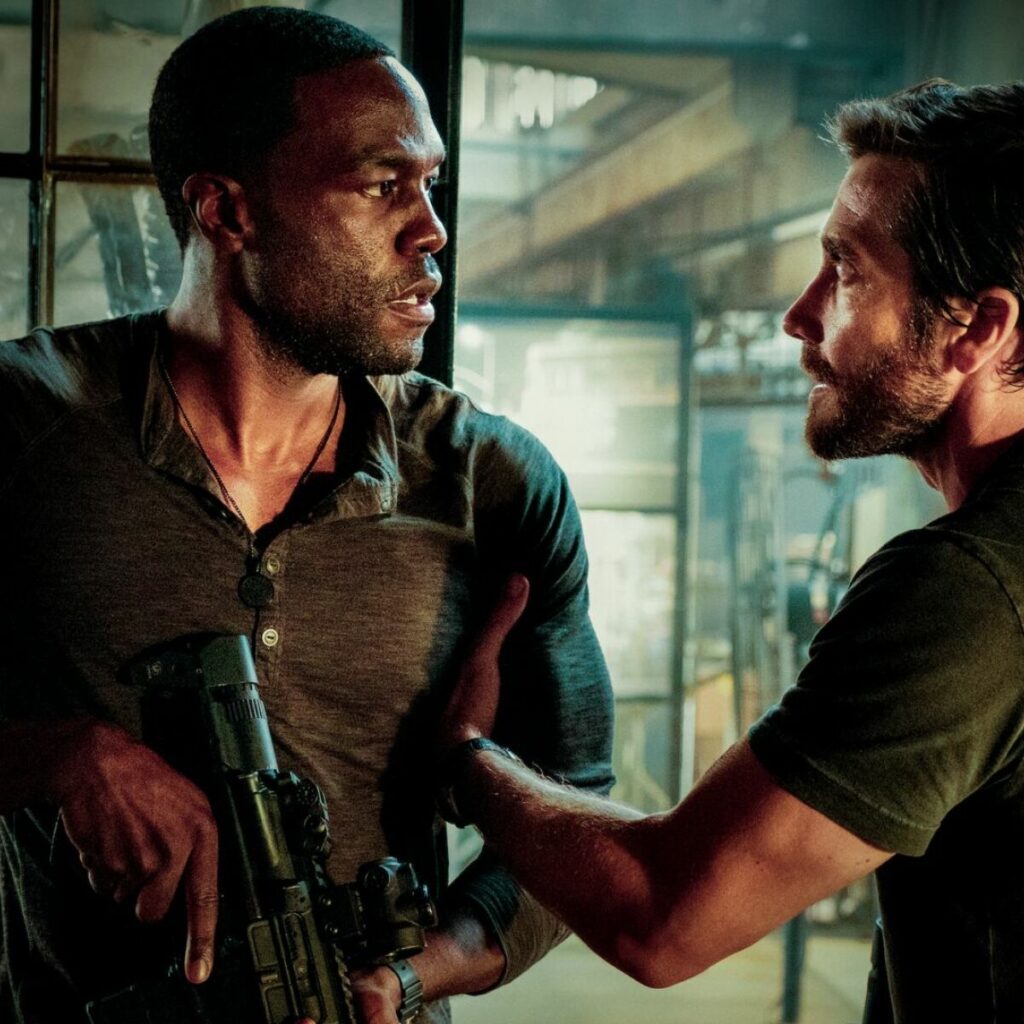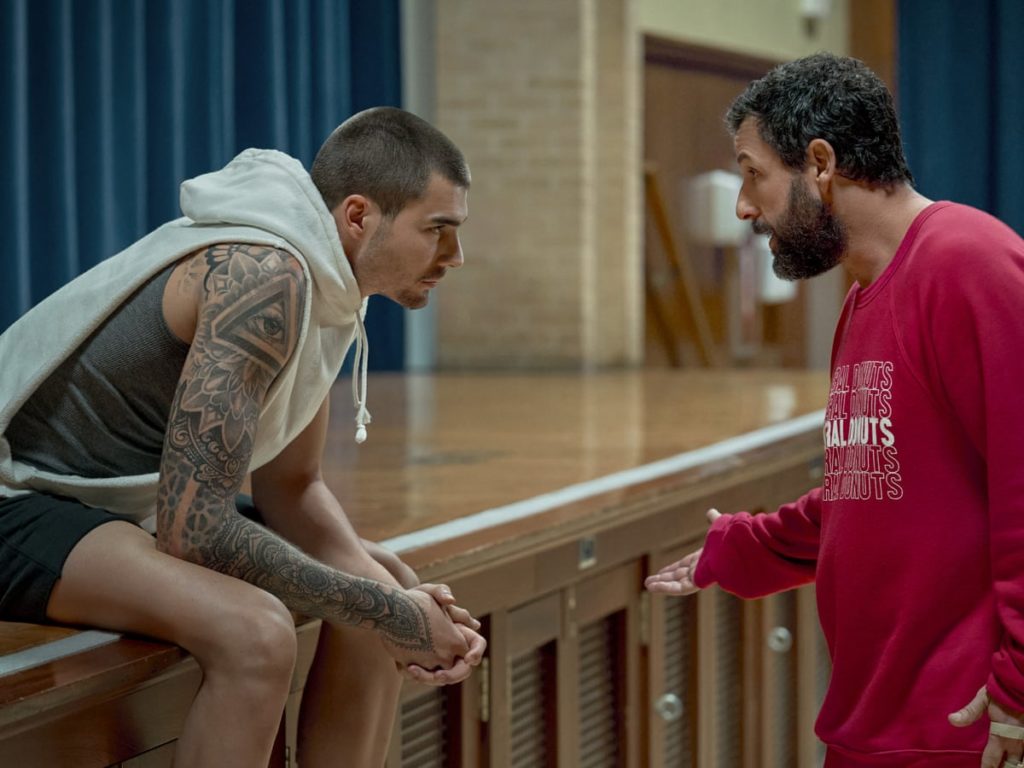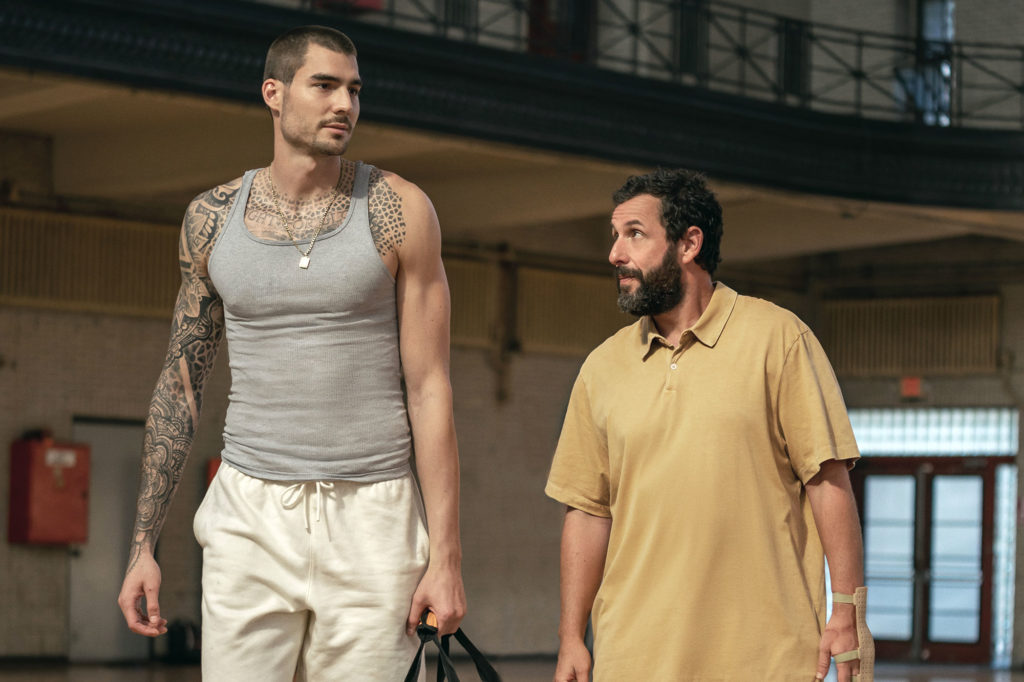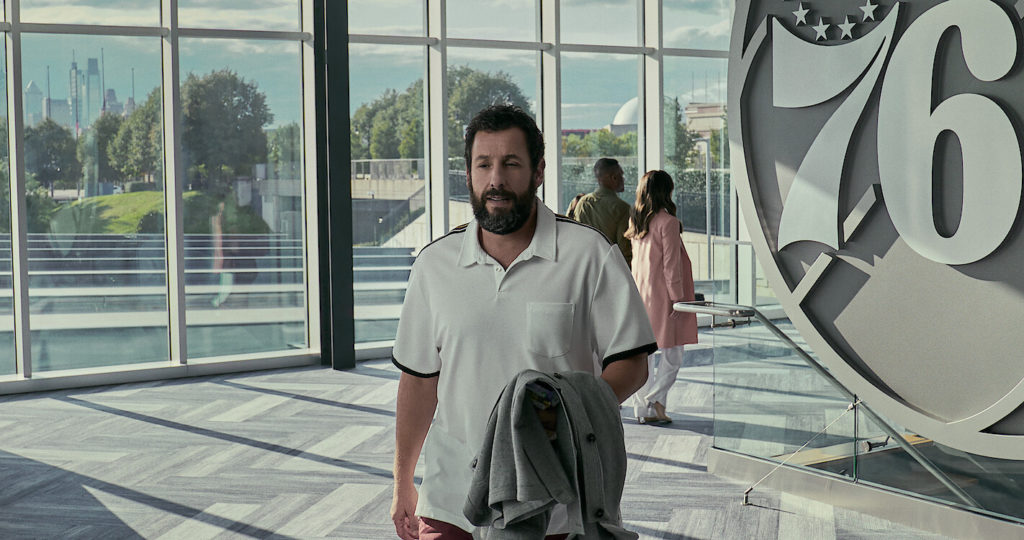
Character flaws used to be a giant mystery to me. It was hard to identify them in movies unless they were overtly obvious. If I did identity them, I became obsessed with charting the flaw over the course of the movie and when the character actually overcame it. I wasn’t sure if the character was supposed to overcome the flaw all at once, in the end, or if they should overcome it bit by bit over the course of the story.
I got so frustrated by this process that I actually swore off character flaws. I convinced myself that they were antiquated Screenwriting 101 riff-raff. You didn’t need them. Any character “arc” that occurred in a movie was manipulated by the writer and therefore insincere.
I eventually rebounded back to somewhere in the middle. There are times when you give your characters flaws and times when you don’t. But I think most audiences want to see some sort of change in the main character over the course of the story or else they feel like there was no point to it all. If the main character didn’t learn anything, then why waste our time?
This goes back to the beginning of storytelling where each story needed to have a moral. And, usually, for a moral to occur, the main character would have to learn something. And in learning something, they’d change. Take one of the oldest tales in the book, The Scorpion and the Frog. The frog’s flaw might’ve been that he’s too trusting. The frog then takes the scorpion across the river but the scorpion stings him. The frog has learned a valuable lesson. Not to be so trusting. Unfortunately, he’s got poison in his body so now he’s going to die. But had he miraculously survived, he’d definitely be a little more suspicious of future animals needing his help. Hence, he’s changed.
Imagine that same story but, this time, the scorpion doesn’t sting the frog. They both get to the other side. The scorpion thanks the frog and says goodbye, and they both go on their way. If I’d told you that story, I assume you’d say to me, “What’s the point?” What do you mean, ‘what’s the point?’ They both made it across the river. “Yeah but nothing happened to them.” Right, cause they survived. “But nothing changed.”
That’s the key phrase there. “Nothing changed.” When people read stories, they expect there to be some change from where the story began or else they feel it was a waste of time. Now, while it’s true, you can rely solely on the PLOT for that change, if you’re doing it right, your plot and your main character are so intertwined that one can’t change without the other.
Now that we know why a character flaw is important, how do we create one? Well, I’m going to share a trick to help you find a flaw for your main character every single time. All you have to do is identify what their goal is in the movie and create a weakness within your character that makes it hard to achieve that goal.
For example, let’s say your main character is an up-and-coming golfer and his goal is to win the Masters. Ask yourself, what are some weaknesses that would make it hard for my character to win the Masters?
Well, they could be stubborn. Whenever a coach tries to teach them, our protagonist wants to do it “their way.” That’s their flaw. Another option: they allow their frustration to overcome them too easily, a la Happy Gilmore. Yet another option: they could be more obsessed with the glitz and glamour of being a professional athlete and therefore don’t put in the necessary work, a criticism that tennis star Nick Kyrgios has been labled with.

The good news is there isn’t some bag of 10,000 flaws you have to sift through every time you write a movie. I’d say there are about 15-20 character flaws that get explored in most movies. We’re all basically living the same experiences and, therefore, battling the same flaws.
Let’s look at another potential movie idea.
Two brothers, one who makes his living as a bank manager, the other who’s a long-time criminal. The criminal comes to the bank manager and says he wants to pull off a heist but can’t do it without the brother’s help.
So this one’s a little more complicated because it’s a two-hander and therefore we have to figure out flaws for each character. The way to do this is to identify the goal of each character. Remember, the goal will determine the flaw. The criminal has a simple goal – steal the money. Therefore, what weakness can we give him that’s going to make that as difficult as possible? It could be that he’s greedy. The heist has an “easy money” option and then some bonus money if they want to be more daring. Our criminal fighting that urge to get as much money as possible is how we explore his flaw.
Another flaw is he could be reckless. His style is to take risks. That helps him get more gold out of the pot than the average bank robber. But it also hurts him when the job is more complicated and needs a concise plan.
Now let’s look at the bank manager. At first glance, you might say his goal is the heist as well. But actually, his goal is to help his brother. At least in this movie it is. So if his goal is to help his brother, what weakness can we give him that makes that job as hard as possible?
The first one that come to mind is loyalty. The bank manager is so undyingly loyal to his brother that he’s willing to do whatever it takes to help him succeed. You can already see how this makes for an interesting arc. When things get heavy and the aftermath of the heist turns into chaos (innocent people are killed, the whole city is after them), how much needs to happen before the bank manager does the “right thing” over being loyal to his brother?
I used the template of “Ambulance” for that one so you can check that movie out to see those flaws in action.
Flaws always get a little tricky with two-handers. Because a lot of writers, for whatever reason – maybe it’s laziness – don’t want to do two character arcs. It’s easier to give the major flaw to one character and keep the other character flat. Another thing writers will do is they’ll give one of the characters a flaw that has to do with the goal. And the second character, the one who doesn’t have as big of a goal, they’ll give them a flaw that’s more internal.
They did this in The Lost City, that Sandra Bullock Channing Tatum movie that came out earlier in the summer. The movie follows romance author, Loretta, as she’s kidnapped to South America due to her knowledge of a rare treasure hidden in the South American jungle. Then you have Alan, the doofy model who plays the studly hero on all of Loretta’s book covers. He flies in to find Loretta to rescue her.
What’s interesting about this setup is that the goal isn’t that clear. Loretta has no interest in finding the treasure. She doesn’t even think it exists. She just wants to get out of the jungle and go home. The person who has the real goal here is Alan. He wants to rescue Loretta.
Now that we understand that, we can figure out his flaw. What can be a giant weakness that stands in the way of Alan achieving this goal? Well, what if Alan believes the hype? What if he believes he’s this great adventurer, even though he’s just the physical manifestation of a real hero? His flaw, then, is his inability to accept who he really is. His arc will entail coming to terms with the fact that he’s just a normal person, and only then will he be able to save Loretta.
Loretta’s flaw is trickier because Loretta’s goal is a negative one. She just wants to leave. She wants to go home. So that doesn’t give us a lot of room to create a compelling flaw. Therefore, the writers connected her flaw to her writing storyline instead. Loretta is a romance novelist who doesn’t have any romance in her life. Her flaw, then, is that she doesn’t believe in love anymore. Of course, over the course of the story, she will fall for Alan and believe in love again. Character arc achieved.
I know all of this is kind of confusing but if you remember this one thing, you’ll be able to come up with a strong flaw for your character every time: Figure out which character in the script has the biggest goal. And then give that character a weakness (aka ‘a flaw’) that makes achieving that goal as hard as possible. You have a little more leniency developing flaws for supporting characters if you even want to go there. But with the character who has the biggest goal in the story, that’s the formula you want to use.
So get to it!

Some quick clarification. I had to put up yesterday’s review late. So you can check that out here. I’m moving the Thursday article to Friday. You get to play with the newsletter in the meantime. We’ve got some things that have never happened before in a newsletter. I make a pitch for the next Star Wars show and it only involves Jawas. I recommend a cool new show that I suspect will be the successor to Ozark. I announce some really cool news about Scriptshadow alumnus, Nick Morris. And I take on a screenplay that has an even bigger concept than “Classified.” Can anyone say, “Inception Meets Saving Private Ryan?”
If you didn’t receive the newsletter, e-mail me at carsonreeves1@gmail.com and I’ll send it to you!
Genre: Drama
Premise: Awkward and lonely, Jared is only able to find a community online — until the day he realizes that his favorite Youtuber lives nearby. Desperate for a connection, he becomes determined to find a way into her life… whether she wants it or not.
About: This script finished with 7 votes on last year’s Black List. The writer, Alexandra Serio, has written and directed a couple of short films, one of which looks to be the inspiration for this screenplay.
Writer: Alexandra Serio
Details: 90 pages

One of the things I’ve been actively doing over the past month is weening myself off junk food internet content.
I’m doing this because, ironically, I watched a Youtube video about the effects of social media and what the video noted was that, a hundred years ago, you read the news in your small town and were immediately able to do something about it.
For example, if the local church burned down, you’d be able to get together with the community and help rebuild it. You’d have a physical outlet for the unresolved news issue.
But today, the news is always so far away – “Crazy Thing Happens in Washington!” – that you can’t actually do anything about it. So the energy that the news generates inside of you stays put, along with all the other junk you come across on the internet, creating a ton of anxiety that comes out in unproductive ways.
I bring this up because, as I’ve been detoxing, I’ve spotted more and more of these “black pill” videos. Since I don’t click on them, I don’t know much about the black pill philosophy. But from my understanding, it’s a negative defeatist way for men to look at the world.
Naturally, then, it’s a perfect backdrop for a screenplay! So let’s get into it!
Jared is in his 20s, lives in a trailer with his mom, and works at Wal-Mart. So, yeah, things aren’t going well for Jared. Jared deals with this through the “black pill” online community. Essentially, black pillers believe that certain men, aka “incels,” will always be invisible to women and therefore they should either accept this and not try to get with women or kill themselves.
But a tiny part of Jared is holding out hope. He watches this ASMR influencer online and she routinely puts out affirmation content where she whispers into your ears as you fall asleep that you are “worthy” and that “looks don’t matter.” Stuff like that.
Lo and behold, Jared can’t fathom his luck when he spots Dee AT HIS WAL-MART! As a Black Piller he can’t actually go up and talk to her so he follows her from a distance, even leaving work to follow her home. Once she’s home, he’s able to watch her livestream in person. As in stalking from his car across the street looking through her window “in person.”
When Jared sends her the livestream question, “Do you have a boyfriend?” And she ignores it, he goes ballistic. A primal incel force is triggered inside of him. He goes and buys a bunch of home improvement stuff and renovates an abandoned trailer near his home. He then sneaks into Dee’s home, waits for her, and kidnaps her (while wearing a mask) during her livestream!
He chains her up in his secondary trailer and starts reading all the news. Due to being kidnapped on a live stream, Dee becomes a national story. Jared spends the next couple of days not really sure what to do with Dee. He’s like the cat who finally catches the laser beam. Now what? He ultimately decides to execute a dramatic suicide on Dee’s channel. Will he be able to pull it off?
As you guys know, I love a good character description.
They’re an easy way for me to identify if I’m reading a good writer.
I really liked the description of Jared here. It’s a little long. But the main thing with any character description is that the reader HAS A GREAT FEEL FOR THE CHARACTER after they read it. So here’s Jared’s description in Blackpill.
JARED, a weary 20-something, enters and drops into a gaming chair exhausted. One look into his dark eyes reveals his exhaustion is soul deep; the look of a man who truly believes he’s never caught a break.
Let’s break this down piece by piece. First we get his age with the added bonus of an adjective. Right away, we’re learning things about this guy.
We’re then told he drops into a “gaming chair.” A “gaming chair” is a very specific piece of furniture. That’s what you want to do as a screenwriter. You want to focus on the SPECIFIC things your character has. Not the general things. If you would’ve told us that Jared, instead, dropped down onto “a couch,” that doesn’t give us nearly as much information about him.
The next sentence gave me even more insight into Jared: “One look into his dark eyes reveals his exhaustion is soul deep.” That’s a different situation than someone who’s simply “exhausted.” “Soul deep” means the exhaustion is irreversible.
Finally, we get this tag about how he “believes he’s never caught a break.” I love that description because we all know people like this, people who believe that life is against them and is determined to make their existence miserable, and how they use that as a sort of defense mechanism to explain not trying to improve. In 40 words, I have a great feel for this character.
Contrast this with yesterday’s character intros. Here’s one for the sister from that script, Brie:
SNIFF! BRIE MORGAN (38, pretty like a wilting flower) snorts a bump of blow like a pro.
The one good thing about this description is that we’re introducing the character during an ACTION, and actions are a great way to tell us about a character. The problem is that snorting coke is one of the most cliche actions in movies. Contrast this with the gaming chair. The gaming chair is SPECIFIC. Snorting coke is GENERIC.
We’re then told, rather clumsily in parenthesis, that Brie is “pretty like a wilting flower.” What does that mean? Is a wilting flower still pretty? So you’re saying she’s kind of pretty? Or are you saying a wilting flower isn’t pretty at all and therefore she’s ugly? Trying to be too clever by half when you’re not clever in the first place is a recipe for writing disaster. Clarity over cuteness, always.
Or here’s one from a script I’m going to review in the newsletter:
Subtle pockmarked scars surround sage eyes — eyes carrying oceans of weight. In another life he may have been a poet.
Holy Moses is this weak. Eyes carrying “oceans of weight.” Extremely clunky phrasing that doesn’t quite make sense. Avoid at all costs. “In another life he may have been a poet.” That’s a strange thing to say after the “oceans of weight” debacle. Where is the connection? Just because you have a lot of history in your eyes, you’re a poet all of a sudden? Weird description all around.
Just remember that when it comes to descriptions, the harder you try, the worse you do. Key in on your hero’s defining characteristic (like Jared, he’s almost given up on life) and give us a simple description that conveys that.
As for the rest of Blackpill, it was pretty good. I enjoy the sub-genre of characters in mental decline. There’s a built-in trainwreck aspect to the narrative and as much as we hate ourselves for it, we all look forward to seeing the crash when we pass it. One of the best versions of this sub-genre is Magazine Dreams. Very similar to this script.
Where I had some issues with Blackpill was with the plot. There wasn’t a whole lot going on in it. Man feels unseen. Man sees influencer he’s obsessed with. Man prepares to kidnap influencer. Man does kidnap influencer. Man executes plan to kill himself.
My issue here is that I couldn’t figure out which route the writer wanted to go down. If this was a stalker thriller in the vein of Single White Female, it needs more twists and turns. If it’s a character study like Joker, you need to dig into the character more. Or, in this case, into both characters. While I had a good feel for Jared, I didn’t know Dee that well. And in a narrative this simple, you probably need to expand the character work to include the co-star.
Cause I think that’s what would’ve elevated this. Let’s look at the circumstances by which a guy could be pulled into this dangerous online religion. But let’s also see how girls can be pulled into, arguably, the just as dangerous religion of influencing. I felt like Serio was starting to go there towards the end. But it was too little too late. I believe this becomes a much more intellectual experience if we’re showing Dee’s influencer obsession as well.
With that said, it’s an easy read and I wanted to find out how things were going to end. As long as you accomplish that, you’ve written a good script.
[ ] What the hell did I just read?
[ ] wasn’t for me
[x] worth the read
[ ] impressive
[ ] genius
What I learned: This script is a great example of how point-of-view changes a story. If you write this from Dee’s point of view, it’s a survival story. If you write this from Jared’s point-of-view, it’s an obsessive stalker story. But there’s a third option. You can write it from both points-of-view. And then it becomes more of an intellectual experience, something that gets cinephiles and critics talking. So always explore every potential point-of-view before you write your script. You might be overlooking the best version of your screenplay.
Today’s writer does something really clever. He takes a recent hit movie and slides it over to the horror genre.
Genre: Horror
Premise: While meeting her boyfriend’s dysfunctional family at their ancestral manor, a young woman finds herself entangled in a bizarre and terrifying mystery when the family’s patriarch claims to have been cursed by a demon.
About: This script finished on last year’s Black List with 9 votes. Screenwriter Edgar Castillo is new to the game. This is his first major achievement as a screenwriter.
Writer: Edgar Castillo
Details: 116 pages
 Sydney Sweeney as Katie would INSTANTLY up this screenplay’s rating to an ‘impressive’
Sydney Sweeney as Katie would INSTANTLY up this screenplay’s rating to an ‘impressive’
Ever hear of a little movie called Knives Out?
What if you wrote that movie… BUT MADE IT A HORROR FILM!?
That’s the smart move today’s writer made. Like they always say, you know it’s a good idea when you read the logline and think, “Why didn’t I think of that?” Which is exactly what crossed my mind while reading Fiendish.
But are the knives out here? Or are they all those plastic fakey knives that retreat into the base when you stab someone?
35 year old Ben Vandererg is taking his new girlfriend, Angie, to his father’s mansion. His father, who’s in his 70s, ran a gigantic private equity firm and is worth 2 billion dollars. He’s invited all of his children home for the weekend, and the expectation is that he has cancer.
Once at the mansion we meet the rest of the family. There’s the Zak Efron like Colin, with his wife Ingrid. Colin has a mean streak he’s been keeping up since he was 5. Then we have daughter, Brie, who snorts a lot of cocaine. She shows up with her husband Rick, who’s described as, “a homeless man’s Patrick Bateman.” Completing the family is the weirdo son, Tobin.
Once at the house, they sit down for dinner and are finally joined by their father, as well as some sort of paranormal investigator woman named Joanna. The dad explains that a couple of months ago, when he was away on vacation, someone did……. THIS! He removes the rug to show them a giant pentagram shape carved into the wood floor.
It is his belief that this pentagram has opened a door to hell and a demon has entered the estate and is now haunting him. He knows it was one of his children who did this. So he gives them 24 hours to talk it out, figure out who the culprit is, and fess up. If they do this, the remaining innocent children still get their inheritance. If they don’t, all the money goes to charity.
Let the games begin.
The kids immediately think that their dad has gone crazy and their first order of business is to get some lawyers involved to ensure that their obviously insane father’s new will is eradicated. But the more they talk, the more secrets spill out, the most damning of which is their father’s involvement with a former maid who eventually killed herself. Could this maid be back from the dead to get her revenge? And if so, who has she brought with her?
Fiendish is a mixed bag of treats with a few tricks thrown in and also some toothbrushes and raisin packages. To be honest, I don’t know exactly what genre this is supposed to be. Is it a horror movie? A horror-comedy? Or a horror-spoof?
It starts off as a horror movie. That’s clear.
But then the family comes in and they’re a little bit funny.
And when we get to the end, we have this theatrical monologue about who the killer is and how their guilt was deduced that I, swear to god, could’ve been cut and pasted from a Scooby-Doo episode.
So I’m a little unsure of what I just read.
I will say that quite a few red flags popped up along the way. One of the things I’m super-wary of whenever I read a horror script are cliched images and cliched scenarios.
In Fiendish we get a person who pulls up to a house only to see a momentary skeletal face in the second floor window that quickly disappears. We get someone who keeps having random unprovoked nose bleeds. We have ominous whispers whenever anyone is alone. And at one point, I kid you not, we have a literal cat jump scare.
Screenwriters everywhere. I beg of you. Never. EVER. Write a cat jump scare into your script. It is LITERALLY the most cliched thing you can put in a horror movie.
There were other issues as well. This is a whodunnit without a killer. Because nobody’s been killed! So it takes a while to wrap your head around that.
Then we have this will deadline. If they don’t find the non-killer by midnight, the inheritance is left to charity instead of the family. Well, the midnight deadline passes. So I guess the characters don’t technically need to solve the mystery anymore? Yet we keep going.
From there, we’re trying to open up some demon porthole but it isn’t clear what we’re going to do once it’s open. Are we sending the ghost maid back there? There’s an implication that we might be traveling to the demon realm to kill the demon, Andromalius, on his own turf. However I thought that Andromalius was here, in the earth realm. So I’m not sure who you’re killing in the demon realm. Maybe Andromalius’s troublemaking brother, Corqualiqus? I hear Corqualiqus is sort of the Jake Paul of the demon realm so in the grand scheme of things, maybe that’s a good idea.
Sometimes we writers can twist our plots into such elaborate knots that it takes an enormous amount of effort to explain what’s happening. So let this be a reminder. You don’t want the reader to have to connect too many dots to figure out what’s going on. Because the reader never has as much information as you, the writer, has. And they haven’t read the script nearly as many times as you. So they’re going to be more confused. Which is why you should err on the side of simplicity, not complexity.
As I was putting this review together, I thought to myself, “Carson, aren’t you being too hard on this script? Is it really as problematic as you say?” And the answer is no, it isn’t.
I think that whenever I read a Black List script, though, I have an expectation. I expect the script to be better than solid. “Solid” is still a high bar to reach in screenwriting. You have to know how to construct characters, how to set up a story, how to keep that story moving, how to write entertaining scenes, how to elevate moments (as opposed to giving us the same old thing). So when the script only reaches that “solid” territory, I’m disappointed. I wanted more.
In regards to “write entertaining scenes” – that’s is a big one. And while I could talk for hours about what makes an entertaining scene, it boils down to creating scenes that are memorable. And there’s only one scene in here that’s memorable.
It occurs when Angie gets stuck in the service elevator in the middle of the night, and we watch as it creeps up, story by story, and she sees really terrifying things as she passes each floor. It’s an original scene. It’s a suspenseful scene. But more than anything, it’s a SITUATION. The character is trapped. We understand the rules (an elevator slowly moving up). The moment builds. It’s a smart and interesting construct for a scenario.
You need at least 4 or 5 of these scenes in a horror script. Not one.
I still have whiplash from Fiendish. It’s a decent screenplay. But I’m not sure it’s elevated enough to recommend. The writer did nail the concept though. Taking successful movies and adding horror twists is one of the best ways to come up with a good idea. Let’s see what non-horror concepts you can turn into horror ideas in the comments section.
There’s gotta be a horror version of Top Gun out there, right? You could probably sell that pitch tomorrow. Who’s going to come up with it?
[ ] What the hell did I just read?
[x] wasn’t for me
[ ] worth the read
[ ] impressive
[ ] genius
What I learned: I challenge all horror writers from this point forward – whenever you’re about to write a scare or a plot beat into your horror movie, ask yourself if you’ve seen it before. And if you have, YOU MUST DITCH THAT IDEA and use something else. Sure, I want to write some creepy person up in a window too. It’s a horror movie staple. BUT THAT DOESN’T MEAN YOU HAVE TO USE IT. Wouldn’t you rather be known as the person who came up with new exciting images? Not ones that have already been done to death? It takes more time to think of them, yes. But who the heck said writing a good screenplay was easy? Oh yeah, my fault, I did. :)

Sports movies are some of the hardest movies to make work because they’re so inherently cliched. You got some sports person, either an athlete or a coach or a GM, who’s an underdog in some sense, and then they fight to get to the top where they finally win the big game and HOORAY, we’re all happy.
In theory.
But in reality, whenever you see a sports movie on the docket, you feel like you’ve already seen it before. That was my issue with Hustle. I watched the trailer and I thought, “Okay, I definitely don’t have to see that movie.” Because it looked exactly like every other sports movie.
But I noticed a few of you talking about it in the comments and I thought, okay, I’ll give it a chance, fully expecting to tap out within 15 minutes.
But 15 minutes turned into 30, 30 to 60, and 60 until I reached the credits. The movie kept my attention the whole way through.
This made me stop, as it always does, and evaluate what happened to make me become so invested in this story. Cause I’m bored by most movies. Screenplays only have a handful of directions they can go. So it’s not hard to predict where they’re going.
“Hustle” was no exception. It went down the route I mostly knew it would go down. Yet I rooted for the characters. Yet I cared. Yet I was wondering how things would get resolved.

I can’t emphasize, enough, how important it is to answer this question. Because we are all working with a template that has been used, re-used, chewed up, spit out, regurgitated, reborn, used again, and used some more with every one of our screenplays. We are always fighting the battle of telling a story that’s already been told.
So if you can understand how a small percentage of these stories end up being good, you don’t have to reinvent the wheel every time you come up with a concept. You know that you can take a generic template and make it exciting.
Which is what Hustle did.
But how did it do it?
The answer is obvious yet complicated. What you first must accept is that there isn’t anything you can do plot wise that audiences haven’t seen before. Once every few years, somebody comes up with some whopper of a plot twist (Bruce Willis is a ghost!) that we didn’t see coming. But it’s hard to come up with truly shocking plot developments consistently.
I caught The Man From Toronto this weekend, which was a reasonably fun movie. But that movie literally hits every single Screenwriting 101 story beat that the screenwriting teachers say you have to hit. As a result, I will not remember any of it by the end of the month.
Luckily, there’s a way to overcome this issue.
You do it with your characters.
And the nice thing about this solution, is you really only have to do it with your hero.
If you can make us root for your hero, we will like your screenplay regardless of what you do with the plot. I know that sounds like a controversial statement but it really isn’t. It’s no different than if you meet a new friend or girlfriend or boyfriend who you really like. Do you need to travel to New York and take trips to the top of the Empire State Building to be happy around that person? No. You could literally lay on the couch for 10 straight hours eating Oreos and that would be enough.
Same deal here. Audiences are less concerned with experiencing some amazing plot when they love the main character. For them, just being around him and seeing what he’s going to do next is enough.

Now does that mean you shouldn’t try to write the best plot possible? Of course not. You want to enhance the experience of hanging out with that character as much as possible. But what it does mean is that you don’t have to worry as much that the predictability of your plot is going to be a problem.
Whenever I’m helping a screenwriter or developing a script with a screenwriter and we’re deep in the weeds and we’re worried it’s not working, I always step back and remind myself, “As long as we get the characters right, we’ll be okay.”
Now what I do I mean when I say “root for?” Because that’s kind of vague. The way I see it is, if you can make us feel like your hero is a) a real person, b) a person who is fighting to better themselves, and c) place them amongst unfavorable circumstances that we would like them to get out of, that’s enough to get us to root for someone. As is the case with any screenwriting advice, this won’t work all the time. There are certain stories that need you to adjust the formula. But this covers the bulk of protagonists you’ll be writing in your screenplays.
Which brings us to Stanley Sugarman, Adam Sandler’s scout character in “Hustle,” who I believe is one of the most well-crafted characters in sports history in so much as making the audience want to root for him. So let’s go over how they achieve this within the “root for” triumvirate.
By the way, if you haven’t seen the movie, it’s about a lifetime NBA scout (Stanley Sugarman) who’s running out of time to fulfill his dream of becoming an Assistant Coach who finds a once-in-a-lifetime prospect in Spain who he wants his team, the Philadelphia 76ers, to pick in the draft. When the brash new jerky Sixers president tells Stanley he’s not interested, Stanley quits the team and brings the player to the United States on his own dime in the hopes of getting him into the draft.
First off, Stanley feels like a real person. Nobody TELLS us that Stanley is a great scout. They SHOW us. They show him grinding. In Germany, in Spain, in China. Watching games in the farthest reaches of the world, looking for that one diamond in the rough.

We show him in airports, in hotels, coming back to Philadelphia, then going back out on the road again. Its’s an endless fruitless job. They show us his family – his wife, his daughter. They show him intelligently breaking down the top players he scouted in board room meetings. They have him saying jargon that only a NBA scouts would know.
All of this convinces us that Stanley is a REAL PERSON. If you don’t convince us of that, the other two things don’t work. We have to buy into this guy being real. If you get lazy and don’t do the work like Hustle did to show us that he’s really in this world, we’re turning your movie off at the 15 minute mark.
Next we have a person who’s fighting to better themselves. This is a key component to making us like a character. Cause we can have issues with people. We had issues with Louis Bloom. We had major issues with Arthur Fleck. But was there anybody else in the nightcrawler game who wanted to be better than Louis? While Arthur Fleck’s clown co-workers were fine playing kid’s parties, Arthur was busy planning his ascension in the stand-up comedy world.
Audiences like people who are trying to better their lives. Stanley Sugarman is 50 and he’s been doing this scouting thing his whole life. And he’s tired. He has every reason not to try. But he does. He keeps going out there, keeps grinding, keeps trying to find that one diamond.
And finally you have the negative circumstances surrounding your protagonist. You create negative circumstances because it gives the character somewhere to ascend to. If they’re already near the top, we don’t need to root that hard for them because they already have a good life.
Stanley is 50 years old and he’s still sleeping in Chinese hotels 20 hours away from his wife and daughter five nights a week. Talk about negative circumstances. (Spoiler) Right when Stanley gets his first official office with the Philadelphia Sixers, the owner who gave him the job dies the next day. Leaving his jerk son who doesn’t like Stanley to run the team. Talk about negative circumstances.

That simple one-two combo of making your hero someone with a big goal and then repeatedly punching them down, away from that goal, is like a screenwriting magic trick when you do it well. Because we like this guy. And we feel sorry for this guy. So of course we’re going to root for him.
Just to be clear, none of this means that, once you’ve done these things, you should phone your plot in. Because you’re never entirely sure if what you’ve done with your workers works. We can follow the rules and still write average characters, unfortunately. So you might as well try to make the rest of your script great as well. But getting that protagonist right solves so many potential issues down the road.
If you are someone who struggles with creating characters that readers root for, watch this movie. Even just watching the first act is enough. Cause that’s where you spend the bulk of your efforts on making the reader fall in love with your hero.

